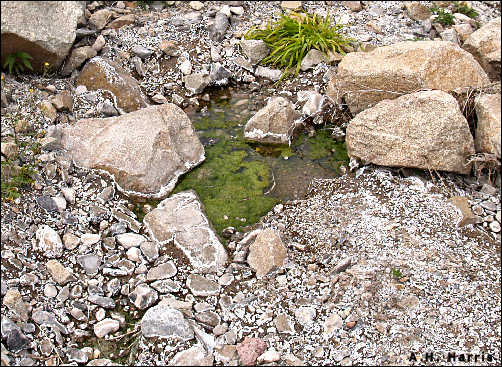

A famous writer once noted that everyone is equal, but some are more equal than others. This might apply to our desert waters, equal in that all water consists of two atoms of hydrogen and one atom of oxygen. A simple taste test, though, will quickly inform that some waters are more equal than others. Indeed, in places, water is virtually undrinkable, lending meaning to the phrase, "pucker up".
Why the differences? Although all water consists of H2O,
water is a powerful solvent, dissolving all sorts of things. In our desert, those
"things" include a wide variety of minerals that strongly affect the
water's character. We're immersed in hard water, which is not a comment on the
softness—or lack of softness—of the water, but on its load of minerals.
Soaps that work easily in nearly pure water struggle in hard, and evaporation leaves
behind deposits of minerals. Clogged swamp coolers, a white coating on damp ground, or
even a thin sheen of white on a newly washed car, all due to the lack of being
"more equal".

Contributor: Arthur H. Harris, Laboratory for Environmental Biology, Centennial Museum, University of Texas at El Paso.
Desert Diary is a joint production of the Centennial Museum and KTEP National Public Radio at the University of Texas at El Paso.

The light colored deposits are of minerals precipitated from pools of water and
from minerals drawn to the surface by capillary action. UTEP campus. Photograph by A.H.
Harris. ![]()